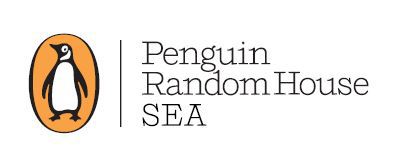
© 2020 Penguin SEA
Charles Lamb (1775–1834) and his elder sister, Mary Anne Lamb (1764–1847), collaborated on three books for children, of which Tales from Shakespeare is the best known. It was the first book to clarify Shakespeare’s stories and played a major part in raising people’s awareness of the great playwright.
Charles and Mary Lamb were born at Crown Office in the Inner Temple in London, where their father was a confidential clerk to one of the lawyers. Charles won a scholarship to the charitable school Christ’s Hospital, and while there became friendly with an older student, Samuel Taylor Coleridge. In 1789 Lamb started work as a clerk, first with a city merchant, moving in 1791 to work at South Sea House, and then finally to work for the East India Company, where he filled in ledgers for thirty-three years. He described his time there as ‘a prisoner to the desk . . . almost grown to wood’. Members of the Lamb family were prone to mental instability and for a short time in 1795 Charles was confined to a mental institution. Although his stay there was brief, he lived under a shadow of madness and suffered from other breakdowns during his life. In 1796 Mary, in a fit of insanity, stabbed both their parents, fatally injuring their mother. The court judged her insane and Mary spent about a year in a lunatic asylum before being released into Charles’s care. He looked after her for the rest of his life and she in return repaid him with great sympathy and kindness. Forced to move from house to house because of malicious gossip concerning Mary’s past, they lived in London, and then from 1823 in Islington, Enfi eld and Edmonton. Charles Lamb died in 1834. Neither Charles nor Mary ever married.
Charles Lamb started writing poetry in the early 1790s and to-gether with Coleridge wrote sonnets for the Morning Post. Through his friendship with Coleridge, Charles and Mary got to know the Wordsworths, Southey, Hazlitt and other major literary figures; their various houses became important gathering places for literary friends. Charles tried his hand unsuccessfully at drama and one of his plays, Mr H., a farce, was hissed off the stage at Drury Lane in 1806. His best work is found in his essays and criticism and also in his stories for children – along with Tales from Shakespeare (written jointly with Mary in 1807) he wrote The Adventures of Ulysses (1808) and Beauty and the Beast (1811). Regarded by some as the finest critic of his time his Specimens of English Dramatic Poets Who Lived about the Time of Shakespeare (1808) stimulated interest in the old English dramatic authors. In 1820 he started contributing essays signed by ‘Elia’ to the London Magazine. These were successfully collected as The Essays of Elia in 1823; a subsequent volume appeared in 1833. A warm-hearted and well-loved man, Charles was also a great letter-writer and some of his best observations are scattered throughout his correspondence.
In addition to collaborating with her brother on Tales from Shakespeare and Poetry for Children (1809), Mary also wrote the greater part of Mrs Leicester’s School (1809), a book of stories for children which draws heavily on autobiographical detail.